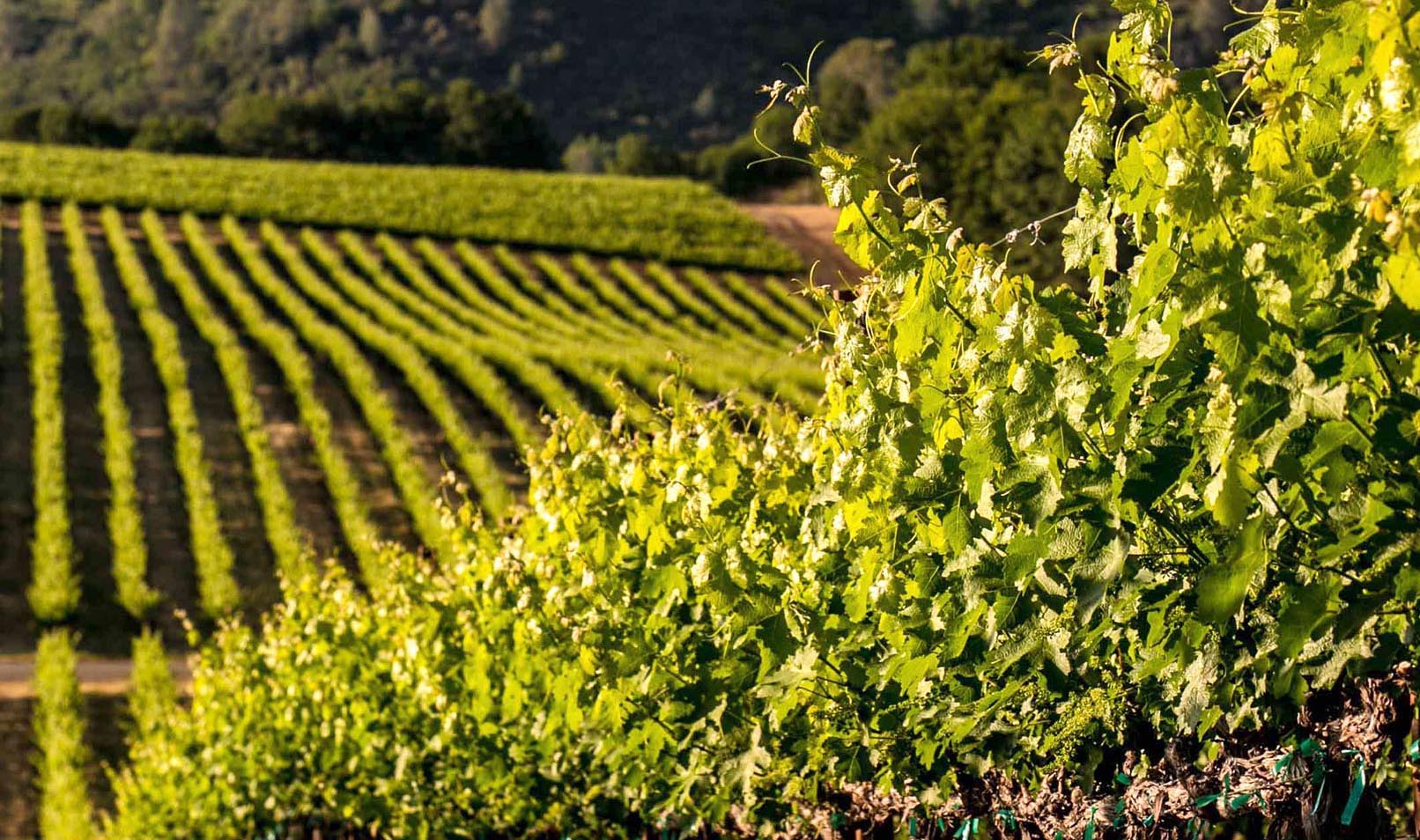Conservation
Growing winegrapes is a long term prospect; when well-managed, vineyards can have a life span of 25 years or more. Because of this, protecting the ecosystems in which they are situated is a high priority for California’s winegrape growers. Enhancing and maintaining ecosystem integrity keeps soils and vines healthy and produces higher-quality winegrapes.
Soil Health
Healthy soils are vital to healthy vines. California grape growers use cover crops between vine rows to add nutrients, control vine growth, attract beneficial insects and prevent erosion. Many growers also use compost, including grape pomace recycled from wineries, to build organic matter in the soil. Compost creates a beneficial environment to hold and maintain nutrients in the soil and soak up and hold water.
Habitat restoration
Because most California vineyards are in rural areas, managing a vineyard involves caring for not only the vines but also the surrounding habitat. Many vineyards are designed with green corridors to ensure that wildlife–deer, fox, coyote–have access to forestland and water. Growers avoid planting around existing trees and away from waterways and vernal pools. They often work with community and government groups to restore streams, wetlands and riparian areas.
Biodiversity
A variety of plants and animals is a sign of a healthy ecosystem. California winegrowers protect trees for owls, falcons and other natural predators that help reduce otherwise harmful rodents. Native habitat and plants are preserved for beneficial insects that control pests. Biodiversity builds long-term stability of the ecosystem by enhancing recycling of nutrients, encouraging pollination, controlling pests and disease, regulating water flow, enabling microclimate and storing of carbon.
Pest Management
Pest problems are a fact of life in vineyard management, so California winegrowers have devised numerous methods for addressing pests using biological and/or cultural controls that minimize impacts to the environment.
Beneficial insects
California winegrowers use beneficial insects, such as predatory mites, spiders, wasps or ladybugs, in vineyards to help control the population of harmful bugs and insects. This is accomplished by introducing insect populations into the vineyard and/or providing habitat, such as cover crops and native grasses, to attract beneficial native insects.
Use of animals
If you see a chicken in a California vineyard, it’s probably not because it’s escaped the coop! Growers use chickens to control destructive insects such as cutworms, as well as weeds and other insects. Growers also use sheep to naturally control weeds and they erect nesting boxes and perches for birds of prey that hunt down vine-eating rodents.
Pest monitoring
Keeping their feet in the vineyard and continually monitoring for harmful pests is a way of life for California winegrape growers. By mapping their vineyards and keeping detailed records from year to year, growers anticipate when and where problems might occur. This means that inputs are used minimally and only when absolutely necessary to support natural controls.
Water
Winegrapes use less water than most crops. California’s Mediterranean climate (rainy in the winter, warm and dry in the summer) is one of the reasons the state is an ideal place to grow grapes for high-quality wines. Still, water is a precious natural resource here, and using it wisely is a priority for California’s winegrowers.
Water conservation
Most California vineyards use drip irrigation, a highly efficient watering method which conserves by giving growers precise control over when and how much water to apply. Drip lines can supply vines with just the right amount of water they need and in the right location to help focus energy into producing grape clusters, not excess leaves or vegetation. This results in more concentrated, higher-quality fruit.
Measuring
California winegrowers use a variety of tools to measure water needs and use, such as weather stations to monitor evapotranspiration, probes that track water availability and depletion in the soil, devices that quantify plant leaf water stress and flow meters for wells and pumps. These tools provide data that helps growers precisely determine the vines’ water needs and apply water efficiently and only when necessary.
Monitoring vines
Growers continually walk their vineyards to monitor vines for water stress by examining leaves, shoot tips and tendrils, and evaluating overall vine health to determine the vines’ water needs. They also check irrigation systems to ensure there are no clogged lines or emitters to improve efficiency. California growers know that the more time they spend in the vineyards, the healthier their vines will be.
Energy
Conserving energy in the vineyard has a double benefit: it reduces greenhouse gas emissions and keeps farming costs in check. In an effort to reduce carbon footprints and keep their ranches economically viable, California winegrowers have adopted a number of energy-saving practices.
Night harvesting
Harvesting grapes at night and in the very early morning keeps grapes cooler, reducing the need for energy-intensive refrigeration at the winery. It also keeps vineyard workers from having to pick in the heat of the day. Grapes that arrive at the winery in a cool state are better able to retain their shape and acidic integrity–a key factor that influences the structure and ultimate wine quality.
Energy efficiency
Many growers have invested in more energy-efficient pumps, and also installed flow meters to track water use and cost-effective pumping. Growers consciously limit the passes that tractors and other equipment make through a vineyard to save fuel, reduce greenhouse gas emissions and limit soil compaction which can threaten the absorption of water and nutrients.
Alternative energy
Solar panels are often strategically placed in California vineyards to provide power for motors, drives, irrigation pumps and even the opening and closing of vineyard gates. Along with solar arrays to capture the beautiful California sunshine, biodiesel farm equipment and electric-powered vehicles are often used.












